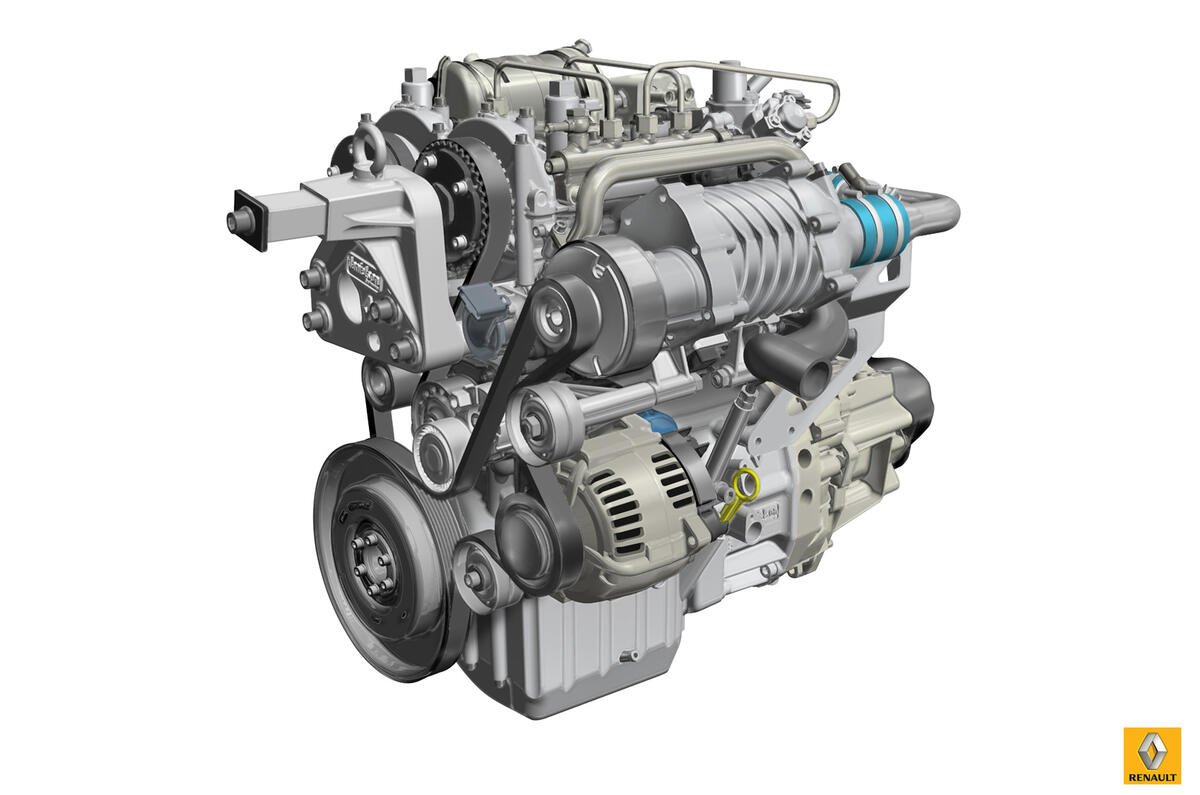Renault has revealed a prototype version of a two-cylinder two-stroke diesel engine, which aims to halve the amount of space needed in the engine bay and not increase engine noise.
The engine is 50 per cent smaller than the best-selling four-cylinder, four-stroke 1.5-litre dCi unit on which it is based. The 730cc prototype unit, which weighs in at less than 100kg, is 40kg lighter than the 1.5-litre dCi.
Renault says the aim is for this engine to be around 15 per cent more efficient than the equivalent four-cylinder unit, although it stresses that this engine is not yet at that level.
Renault has not revealed any performance figures for the engine, but says it is both supercharged and turbocharged and produces between 48bhp and 68bhp and up to 107lb ft.
A company insider said the engine has been designed with emerging markets in mind and should cost less to produce and buy than the full-sized four-cylinder version due to the reduced number of parts required. However, it will still cost more than a petrol engine of equivalent power to the 1.5 dCi.
The company spokesman also said this engine should sound exactly the same as the four-cylinder version.
Currently, the main prohibiting factor is the cost of the turbocharger. The spokesman said: "We haven't invested yet, but we know how to make it."
A second phase of development is expected before the engine makes its way into production cars.Renault also revealed a host of other new and developing technologies at its Cooperative Innovation Laboratory (LCI) in Paris. They included:
LPG/Petrol engine
A new engine due to go on sale in the coming months is a petrol/LPG dual-fuel unit. It is based on the 0.9-litre three-cylinder petrol engine found in the likes of the Dacia Sandero.
Renault says this engine is 20 per cent more efficient than an LPG engine of the previous generation, and it cuts emissions by about 10 per cent. Due to a lack of LPG infrastructure, this engine won't be offered in the UK.
Twizy Delivery Concept
Renault’s researchers have taken a standard Twizy and turned it into a small delivery truck. The prototype has no rear seat and instead has a detachable two-wheeled trailer that can carry loads of up to 150kg.
Trials are set to start in April next year before a decision is made on whether to put it into production.
Whole dash touchscreen
A revolutionary idea Renault has created is a touchscreen that stretches across almost the entire width of the cabin. It uses two small LCD screens in front of the driver for the instruments and two 76x17cm screens on the rest of the dash. One acts as a large infotainment screen, controlling the likes of the sat-nav, air conditioning and even the direction in which the door mirrors are pointing. The second screen is in front of the passenger and is for entertainment. The system can play films and music and display photos, and should be able to connect to the internet via a smartphone. It uses a similar optical system to that used by Jaguar Land Rover that allows the passenger to see what is on the screen while hiding it from the driver. An insider said the technology is ready to go into production, but a final decision has not yet been made.






Join the debate
Add your comment
@ hardshoulder
Valved two stroke
Remember the Ford petrol 2-stroke?
Orbital 2-Stroke
Also seem to recall that the Ford Ka was originally intended to be powered by a 2-stroke petrol (a development of the Orbital) before EU emission laws forced them to abandoned the 2-stroke unit and make do with the existing Kent engine.
Read a while back that Chrysler also had a 2-stroke project going and was even going to power the mk1 Neon before emission laws killed it off.
Hope it works out for Renault with this engine eventually powering the Twingo (and related Smart models) and that other automobile manufacturers are encouraged to produce their own 2-stroke petrol / diesel engines for cars.